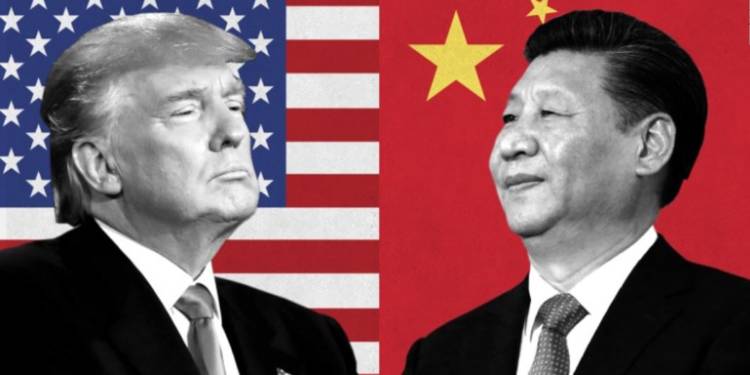The Coronavirus Pandemic has played up the animosity between the two biggest economies of the world- the United States and China. While the Trump administration has been aggressive in its rhetoric blaming Beijing for mishandling the Pandemic, the Dragon has been taking jibes at Washington, issuing threats and making up conspiracy theories like blaming the US Army for spreading the virus in Wuhan.
Several months after the Pandemic gripped all parts of the world, the two superpowers are on a collision course, pointing in the direction of a huge conflict. At least two unprecedented developments suggest that things are escalating like never before- Trump administration’s decision to scrap the Open Skies Treaty and a 6.6 per cent hike in China’s defence budget despite a shrinkage of 6.8 per cent in its economy in the first quarter.
The United States has decided to exit the Open Skies Treaty, which allows the 34 member countries to fly unarmed aerial surveillance flights over the territories of other participants.
The 1992 Treaty is designed to allow mutual understanding and confidence by giving all countries an equal opportunity to gather information about military activities in other member countries. The essence of the treaty is to avoid the risk of serious military miscalculations that can lead to war.
Blaming Russia for this decision, US President Donald Trump said, “Russia didn’t adhere to the treaty, so until they adhere, we will pull out.” Secretary of State Mike Pompeo said, “It has become abundantly clear that it is no longer in America’s interest to remain a party to the Treaty on Open Skies,” and added, “Effective six months from tomorrow, the United States will no longer be a party to the Treaty.”
China is not a member of the 1992 Treaty that encourages gathering of information about military activities in other participating countries. However, Russia and China have been warming up to each other in the midst of the Coronavirus Pandemic, which makes Trump’s decision to withdraw significant.
Meanwhile, Beijing has also taken certain decisions that too hint at heightened tensions between the two superpowers. The National People’s Congress, China’s most important annual political event is underway, and the top legislative body has announced some unprecedented decisions.
Beijing has not set a target for GDP growth this year, amidst the acute fallout of the Coronavirus Pandemic. The Chinese economy has been hit hard by the Pandemic with a 6.8 per cent shrinkage in the first quarter following the Coronavirus-induced lockdown.
This is the first time that Beijing doesn’t have a GDP target since 1990 when records began, but still the Dragon has hiked its military spending by 6.6 per cent to 178.16 billion Dollars.
Clearly Beijing is not ready to cut down on defence spending even if it means putting greater burden on an already crippled economy. This comes in the background of Chinese aggression in its vicinity ever since the Pandemic gripped the United States and other parts of the world.
Since mid-April, Chinese belligerence has been on the rise. It started with the South China Sea, where China claims almost all geographical features, even if they fall in the legitimate space of other stakeholders like Vietnam, the Philippines and Malaysia. Beijing has been openly violating the UN Convention on the Law of the Sea.
Amidst the Pandemic, China had sensed an opportunity after US Navy docked both its carriers in the Pacific- the USS Roosevelt and USS Ronald Reagan due to several confirmed Chinese virus cases. But the Australian and US Navies ganged up with each other to confront the Chinese vessels.
Things have also been heating up in the East China Sea where Chinese vessels recently intruded Japanese waters disputed by Beijing and started chasing Japanese boats. However, Japan would take none of this, and warded off the Chinese with a warning. Recently, Tokyo announced a whopping $46.3 billion defence budget with an eye on the Dragon.
On its southern border, China has engaged India in scuffles along the Line of Actual Control (LAC) at Sikkim and Ladakh. The situation in Ladakh is running tense and even the United States has slammed Beijing for its misadventures against India.
China has been reviving disputes in its vicinity and the United States hasn’t shied away either. The latest decisions coming from the United States and China however suggest that a major armed conflict involving the two superpowers might well be in the offing.


































